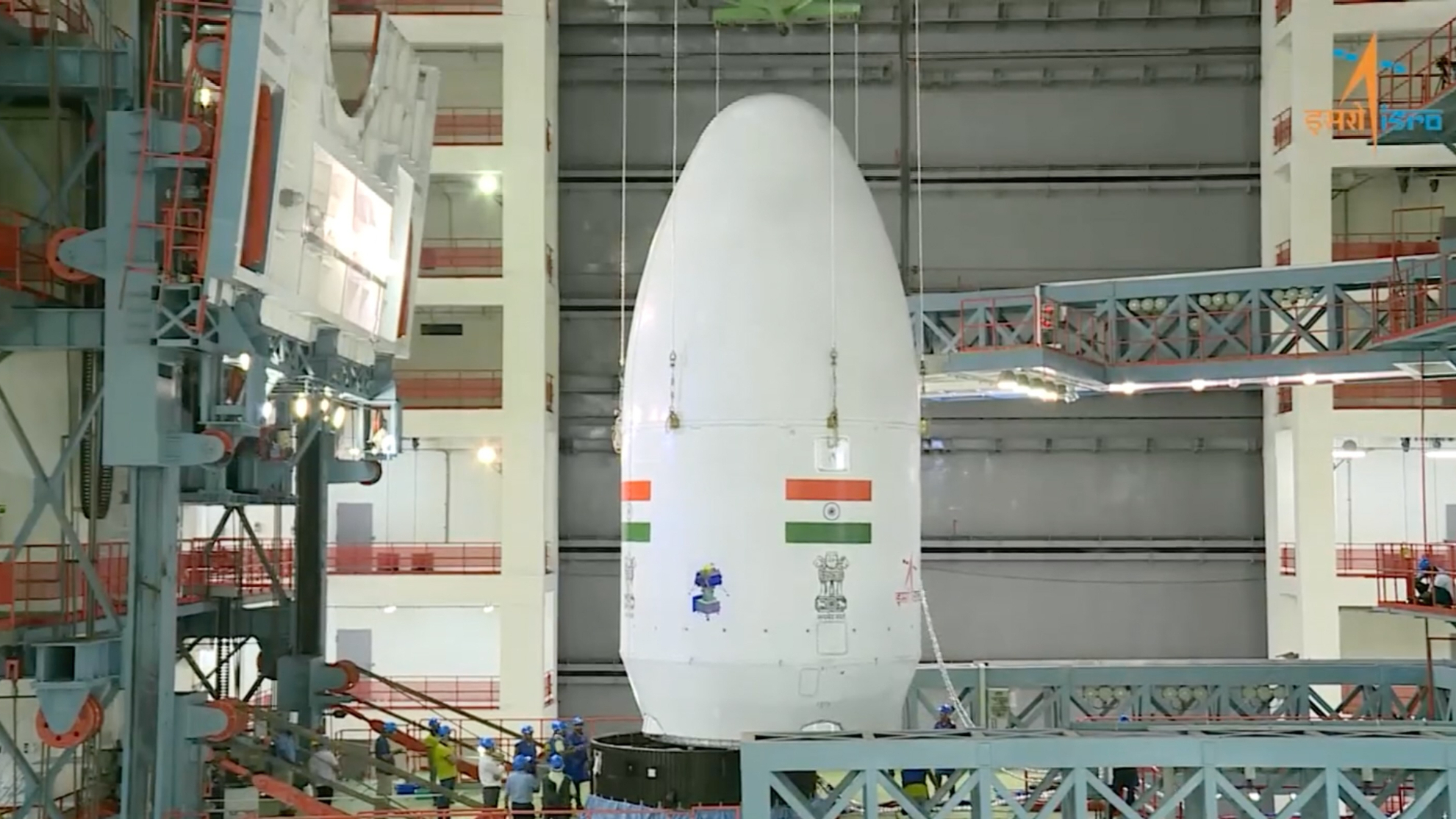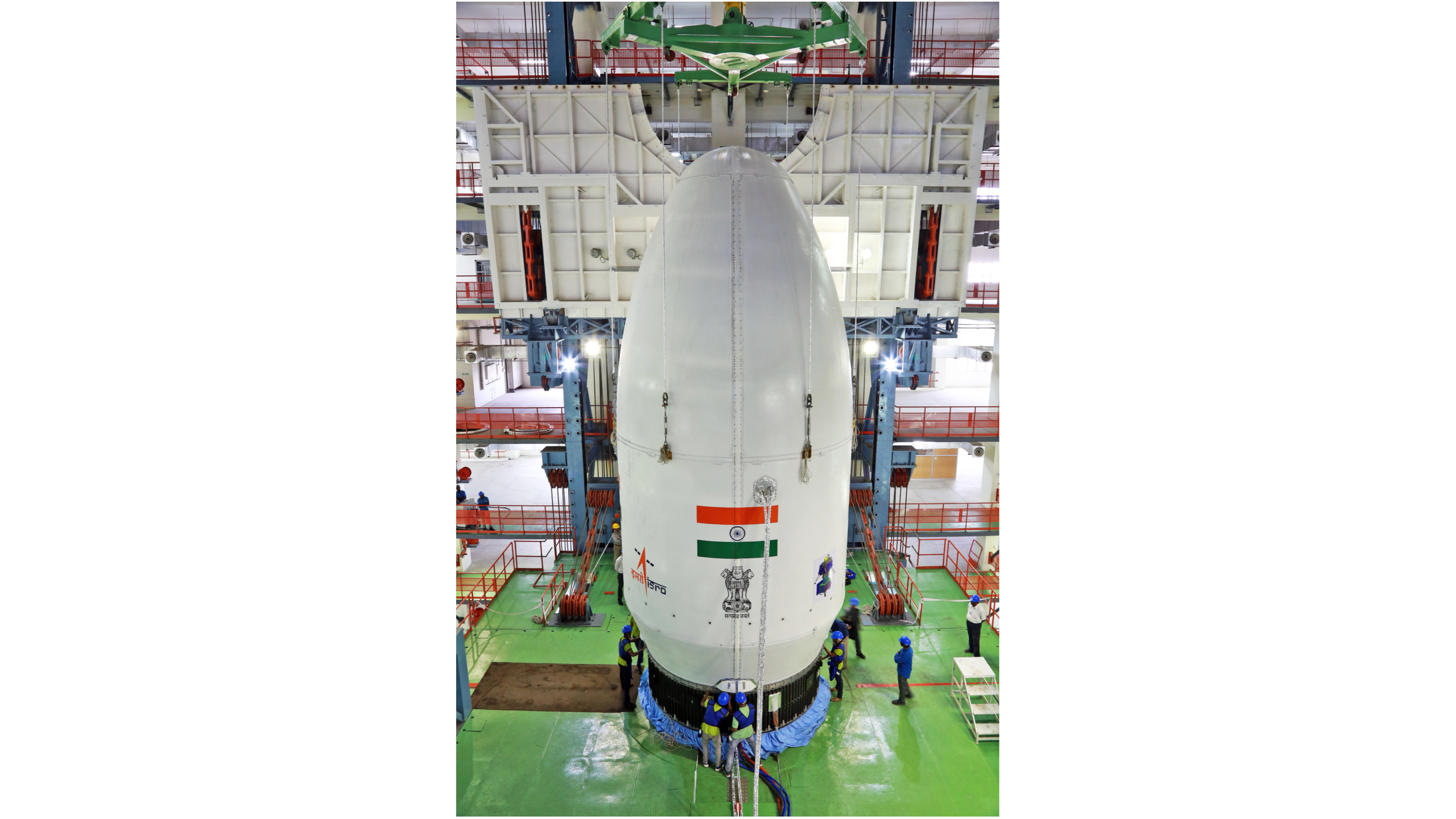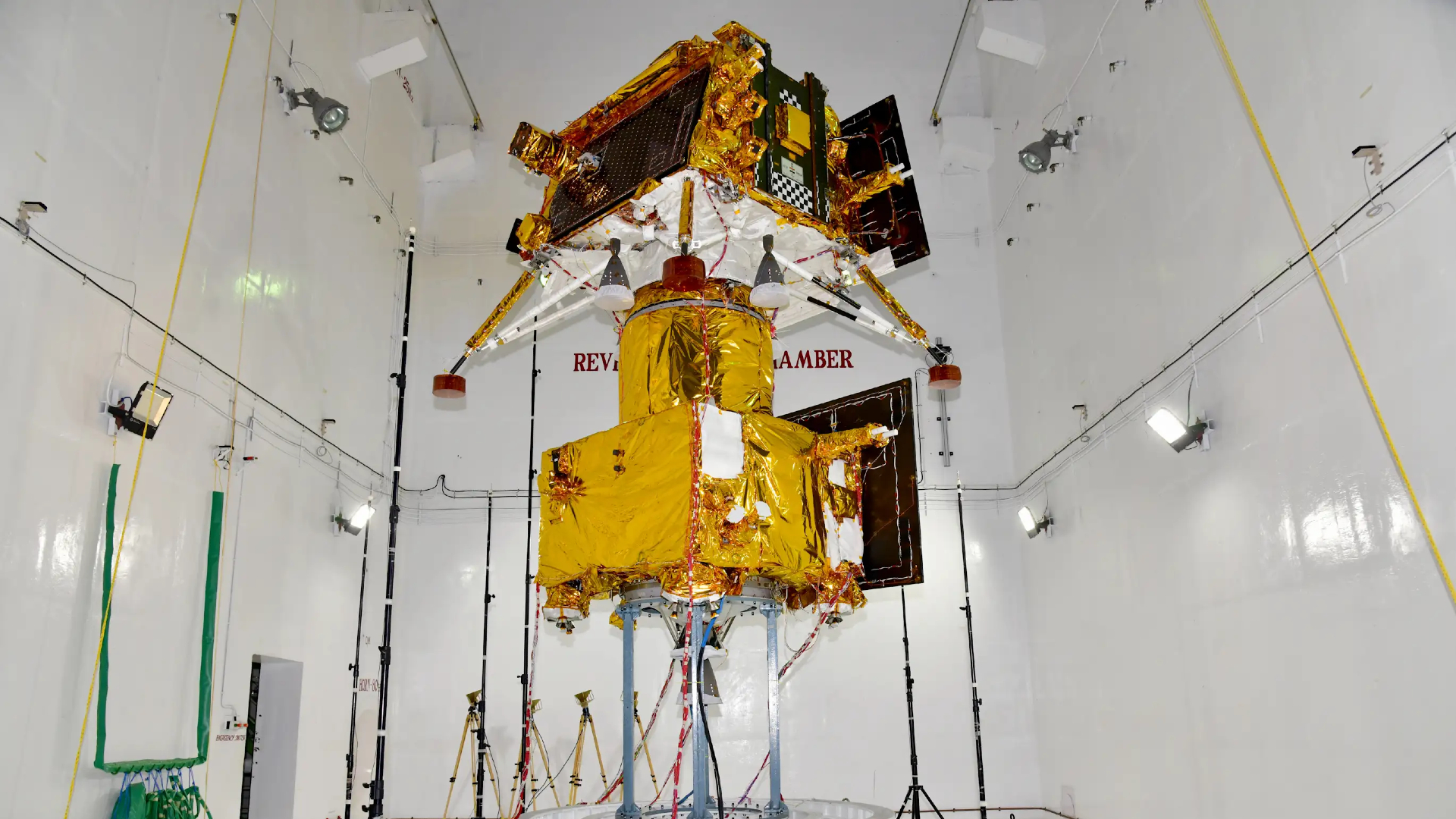India to launch Chandrayaan 3 moon lander and rover on July 14 (video, photos)
July 14: India has successfully launched the Chandrayaan 3 mission to the moon. Read our full launch recap.
India is getting its next moon mission ready for liftoff.
The robotic lunar lander and rover that make up the Chandrayaan 3 mission were stacked atop their Launch Vehicle Mark-3 (LVM3) rocket at the Satish Dhawan Space Centre on Wednesday (July 5), according to the Indian Space Research Organisation (ISRO), which posted photos and a video of the process on Twitter Wednesday morning.
If all goes according to plan, Chandrayaan 3 will launch from Satish Dhawan in the early morning hours of July 14.
Related: The moon: Everything you need to know about Earth's companion
As its name suggests, the upcoming mission is the third in India's Chandrayaan program of lunar exploration.
Chandrayaan 1, which launched in October 2008, sent a moon orbiter aloft in India's first-ever deep-space effort. The orbiter carried a 64-pound (29 kilograms) impactor probe that slammed hard (but intentionally) into the lunar surface near the south pole.
Breaking space news, the latest updates on rocket launches, skywatching events and more!
The impactor detected water ice just before it crashed, a discovery matched by a NASA instrument aboard the Chandrayaan 1 orbiter called the Moon Mineralogy Mapper.
Chandrayaan 2 launched an orbiter, lander and rover toward the moon in July 2019. The orbiter arrived safely and continues to study the moon today with its suite of eight science instruments. But the lander-rover duo crashed during their touchdown attempt, a failure apparently related to its braking thrusters.


India will take another crack at a moon landing on Chandrayaan 3. Indeed, that's the primary focus: The new mission carries a lander and rover but no orbiter.
The two surface craft carry six science instruments between them, which they'll use to gather a variety of data over the course of one lunar day (about 14 Earth days). The mission's propulsion module is also equipped with an instrument that will characterize Earth from afar, with the goal of informing future searches for potentially life-supporting exoplanets.
Chandrayaan 3 aims "to demonstrate end-to-end capability in safe landing and roving on the lunar surface," ISRO officials wrote in a mission description. Success would be huge for the nation. To date, just three entities have successfully soft-landed a craft on the moon — the governments of the Soviet Union, the U.S. and China.
Editor's note: This story was updated at 3:50 p.m. EDT on July 6 with the new Chandrayaan 3 target launch date of July 14. ISRO had been targeting July 13 for the liftoff.

Michael Wall is a Senior Space Writer with Space.com and joined the team in 2010. He primarily covers exoplanets, spaceflight and military space, but has been known to dabble in the space art beat. His book about the search for alien life, "Out There," was published on Nov. 13, 2018. Before becoming a science writer, Michael worked as a herpetologist and wildlife biologist. He has a Ph.D. in evolutionary biology from the University of Sydney, Australia, a bachelor's degree from the University of Arizona, and a graduate certificate in science writing from the University of California, Santa Cruz. To find out what his latest project is, you can follow Michael on Twitter.

